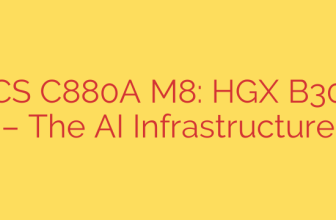
View Images Directly in Your Terminal: A Guide to the Best Command-Line Viewers
For developers, system administrators, and command-line enthusiasts, the terminal is home. It’s where work gets done efficiently and without distraction. But what happens when you need to view an image? Traditionally, this meant breaking your workflow, switching to a GUI file manager, and opening a separate application. Fortunately, there’s a better way: terminal-based image viewers.
These powerful utilities allow you to render images directly within your console window, keeping you focused and productive. Whether you’re working on a remote server via SSH, managing files on a headless system, or simply prefer a minimalist setup, a command-line image viewer is an essential tool.
Why Use a Terminal Image Viewer?
Leaving the command line to view a file might seem like a minor inconvenience, but the benefits of staying within your terminal environment are significant.
- Uninterrupted Workflow: Avoid context switching between the terminal and a graphical user interface (GUI), keeping your focus sharp.
- Remote Server Management: Easily view images on a remote machine over an SSH connection without needing to set up X11 forwarding or download the files.
- Resource Efficiency: Most terminal viewers are incredibly lightweight and fast, consuming far fewer system resources than full-featured desktop image applications.
- Scripting and Automation: Integrate image viewing directly into your shell scripts for tasks like previewing generated graphics or monitoring visual data.
How Do They Work?
Terminal image viewers use various techniques to display graphics. Some convert images into ASCII or ANSI character art, which works in any standard terminal. More advanced viewers leverage specific terminal emulator features like Sixel, iTerm2, or Kitty graphics protocols to render high-fidelity images directly in the console. Others use the system’s framebuffer to draw pixels directly to the screen.
The Best Terminal-Based Image Viewers
Here is a curated list of some of the most powerful and popular open-source image viewers for your terminal.
1. Chafa
Chafa is a modern and highly versatile viewer that stands out for its exceptional output quality. It can display images using a wide range of protocols, automatically detecting the best one for your terminal.
- Key Features: Excellent support for Sixel, Kitty, and iTerm2 graphics protocols, animated GIF support, high-quality character art output, and extensive customization options.
- Best For: Users who want the highest possible image fidelity in a compatible modern terminal.
2. Feh
Feh is a classic, fast, and minimalist X11-based image viewer that is often used from the command line. While it opens images in its own simple window, it’s launched and controlled entirely from the terminal, making it a favorite for scripting and quick previews.
- Key Features: Extremely fast and lightweight, versatile command-line options for slideshows and wallpaper setting, and highly scriptable.
- Best For: Users in a desktop Linux environment who need a no-frills, lightning-fast viewer for scripting or quick file browsing.
3. lsix
As the name suggests, lsix is like the ls command, but for images. It’s designed to display thumbnail grids of images directly in your terminal, making it incredibly useful for quickly identifying files in a directory.
- Key Features: Displays image thumbnails instead of filenames, automatically detects terminal background color, and works well over SSH.
- Best For: Quickly previewing all the images in a directory at once without opening them individually.
4. w3m-img
w3m is a terminal-based web browser, but its image display capability (w3m-img) can be used as a standalone viewer. It renders images in the terminal using the framebuffer or an X11 window.
- Key Features: Integrates with the w3m text-based browser, can display images within the terminal frame, and is a long-standing, stable option.
- Best For: Viewing images in-line while browsing the web in the terminal or for a simple, reliable viewing solution.
5. tiv (Terminal Image Viewer)
tiv is a small and simple utility that takes a different approach. It converts images into 24-bit color ANSI art (using special block characters), which looks surprisingly good in a modern terminal.
- Key Features: Works in almost any modern terminal without special protocols, provides decent image representation with 24-bit color, and is extremely easy to use.
- Best For: A simple, universal solution when you need to view an image on a system where more advanced graphics protocols are not available.
6. Terminology
Terminology is not just an image viewer; it’s a full-fledged terminal emulator with powerful, built-in multimedia capabilities. It can display images, play videos, and even show documents directly within the terminal window.
- Key Features: Native, high-quality image and video playback, allows setting images as terminal backgrounds, and offers advanced features like splits and tabs.
- Best For: Users looking for an all-in-one terminal emulator that handles multimedia out of the box.
Actionable Security and Usage Tips
- Check Your Terminal Emulator: For the best results with viewers like Chafa or lsix, ensure you are using a modern terminal emulator that supports advanced graphics protocols. Popular choices include Kitty, WezTerm, iTerm2 (on macOS), and Konsole.
- Install from Trusted Repositories: Always install these tools using your system’s official package manager (e.g.,
apt,yum,pacman,brew) to ensure you are getting a secure and stable version. - Configure SSH Correctly: When viewing images over SSH, performance depends on your connection. Tools that use character-based output (like tiv) will be faster over slow connections than those streaming high-fidelity pixel data.
- Combine with Other Tools: The real power of the command line comes from combining tools. You can pipe the output of a file finder like
finddirectly into an image viewer to create a slideshow of specific images. For example:find . -name "*.jpg" | feh -F -
Source: https://www.linuxlinks.com/best-free-open-source-terminal-based-image-viewers/








